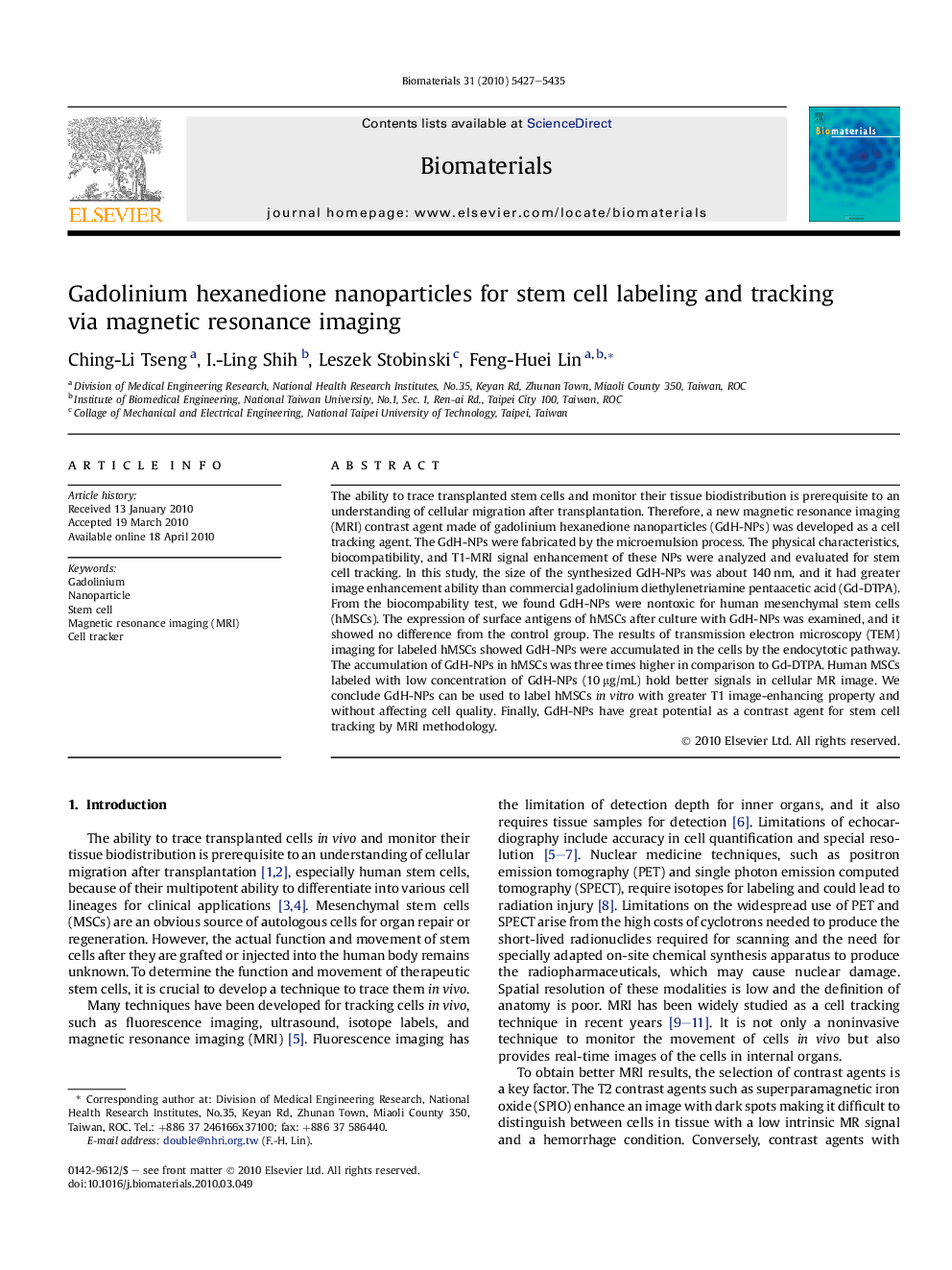| Article ID | Journal | Published Year | Pages | File Type |
|---|---|---|---|---|
| 8883 | Biomaterials | 2010 | 9 Pages |
The ability to trace transplanted stem cells and monitor their tissue biodistribution is prerequisite to an understanding of cellular migration after transplantation. Therefore, a new magnetic resonance imaging (MRI) contrast agent made of gadolinium hexanedione nanoparticles (GdH-NPs) was developed as a cell tracking agent. The GdH-NPs were fabricated by the microemulsion process. The physical characteristics, biocompatibility, and T1-MRI signal enhancement of these NPs were analyzed and evaluated for stem cell tracking. In this study, the size of the synthesized GdH-NPs was about 140 nm, and it had greater image enhancement ability than commercial gadolinium diethylenetriamine pentaacetic acid (Gd-DTPA). From the biocompability test, we found GdH-NPs were nontoxic for human mesenchymal stem cells (hMSCs). The expression of surface antigens of hMSCs after culture with GdH-NPs was examined, and it showed no difference from the control group. The results of transmission electron microscopy (TEM) imaging for labeled hMSCs showed GdH-NPs were accumulated in the cells by the endocytotic pathway. The accumulation of GdH-NPs in hMSCs was three times higher in comparison to Gd-DTPA. Human MSCs labeled with low concentration of GdH-NPs (10 μg/mL) hold better signals in cellular MR image. We conclude GdH-NPs can be used to label hMSCs in vitro with greater T1 image-enhancing property and without affecting cell quality. Finally, GdH-NPs have great potential as a contrast agent for stem cell tracking by MRI methodology.
